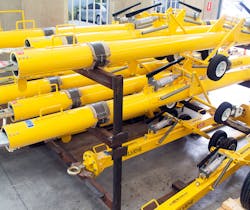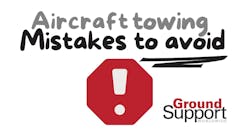Two-Hour Delay Follows Tow Bar Break At BOS
The sudden bang on pushback was unmistakable – at least to a former airport worker. As soon as I heard that sound, I knew the tow bar had broken or otherwise become disconnected from the aircraft.
Tow bars break – perhaps all too often because in the rush of departures and arrivals, and reductions in staff, attending to routine preventive maintenance can frequently fall by the wayside. Usually a broken tow bar is not too big a deal – you just replace the tow bar, and a few minutes later the aircraft is back on its way.
Unfortunately, the sound that followed this tow bar break was disconcerting. It sounded to me as though the nose landing gear had taken a solid hit when the bar broke. At a minimum, maintenance was going to have to come out and check the aircraft for damage. A damaged nose landing gear can be critical on takeoff or landing.
Sure enough, the captain came on a few minutes later and announced a departure delay while maintenance came out to look at the aircraft. I was on my way to EWR to catch an international flight, as were apparently a number of my fellow passengers. While I had fortunately booked myself with hours to spare, some of my seat mates with tighter connections were clearly concerned by any delay.
As it turned out, the nose gear was damaged and took an hour to repair. By the time this was done, the aircraft had lost its ATC position into EWR and was further delayed by another hour. At this point, several passengers around me were frantically trying to re-book missed international connections. With higher load factors – coupled with the air traffic strike in France – rebooking some connections was a challenge.
Here are my two take-aways from this experience:
- Non-motorized equipment needs regular inspection, too.
- And leave plenty of time when making international connections, especially when flying to a city with only one connection a day.






